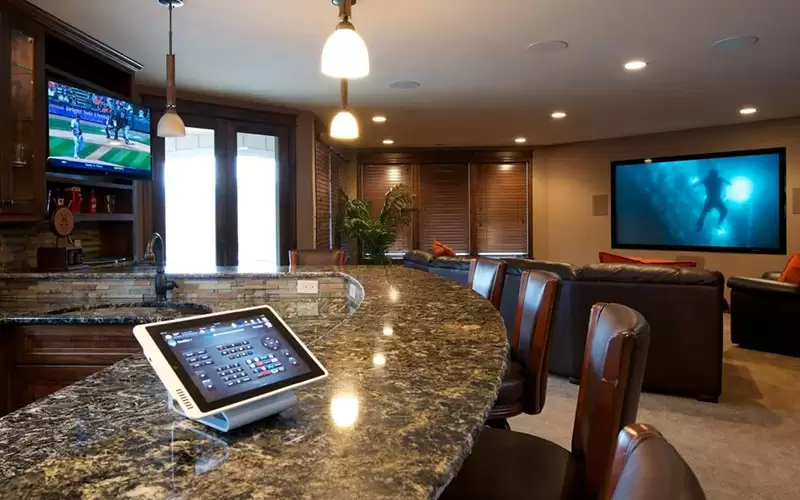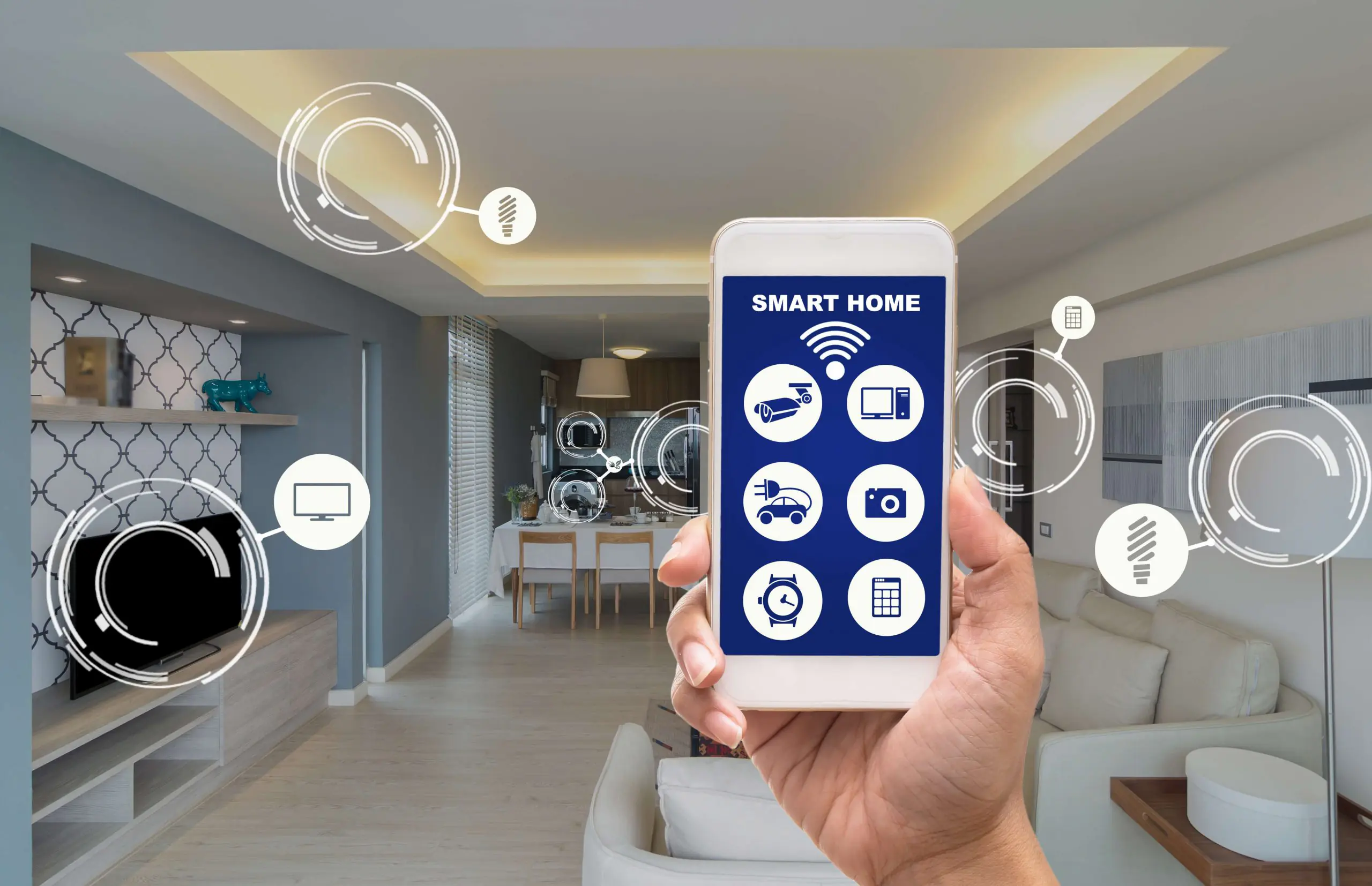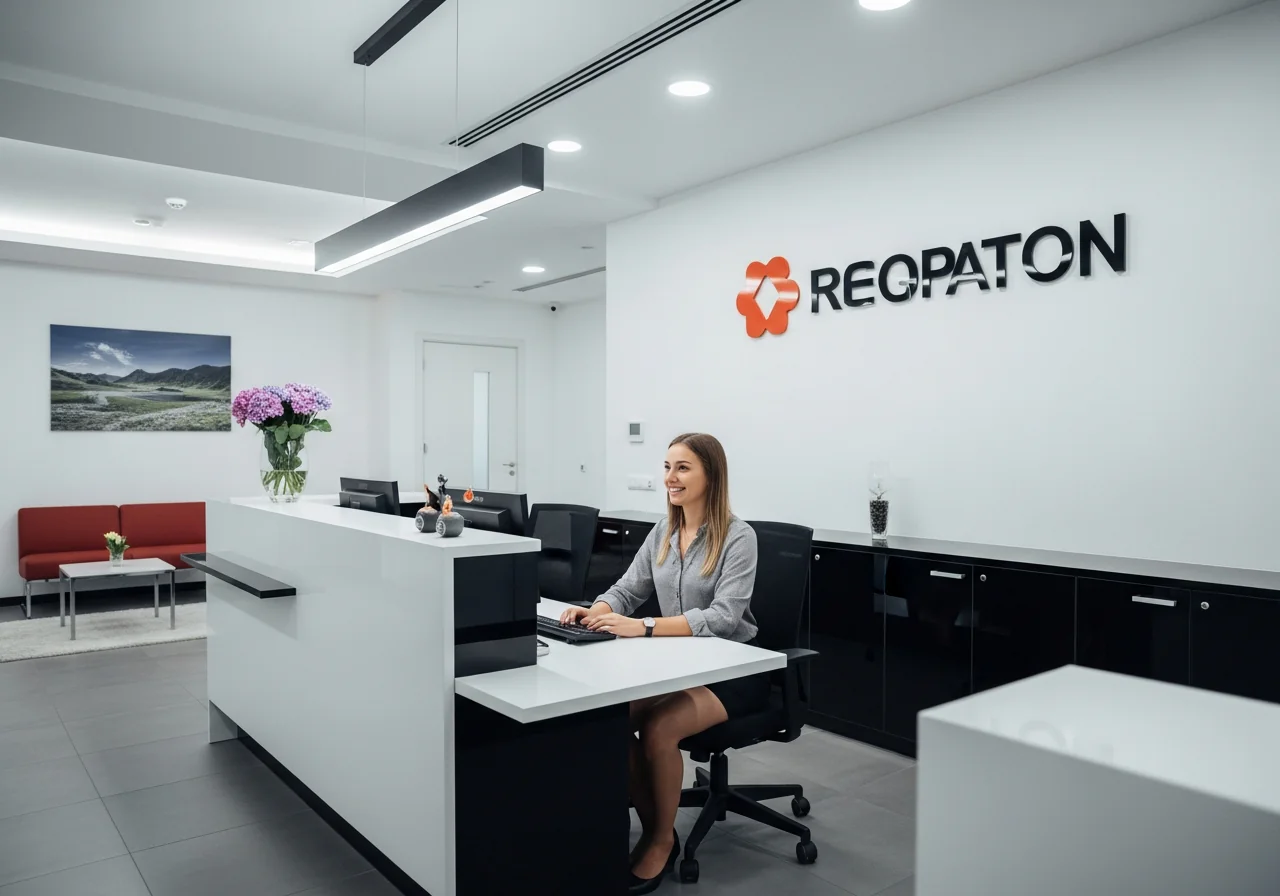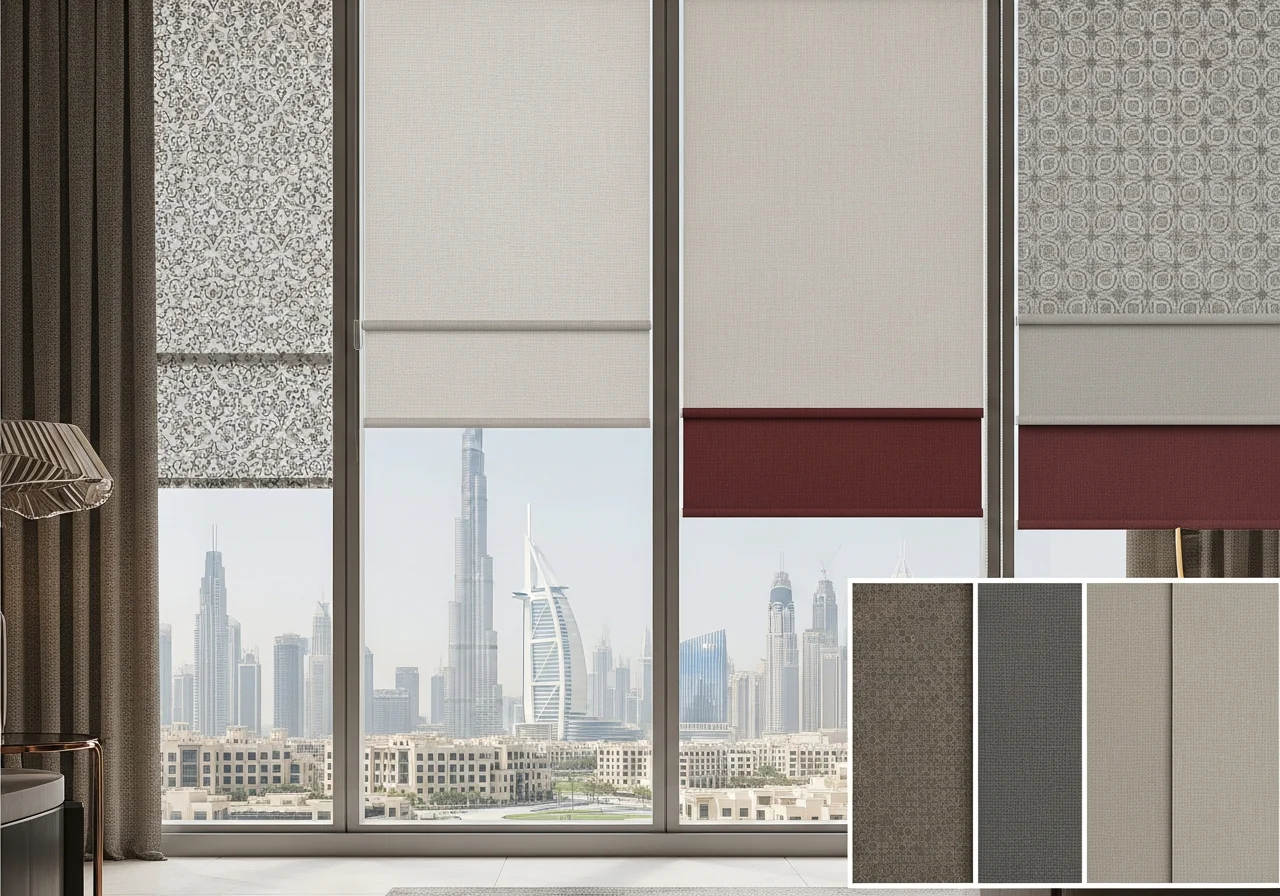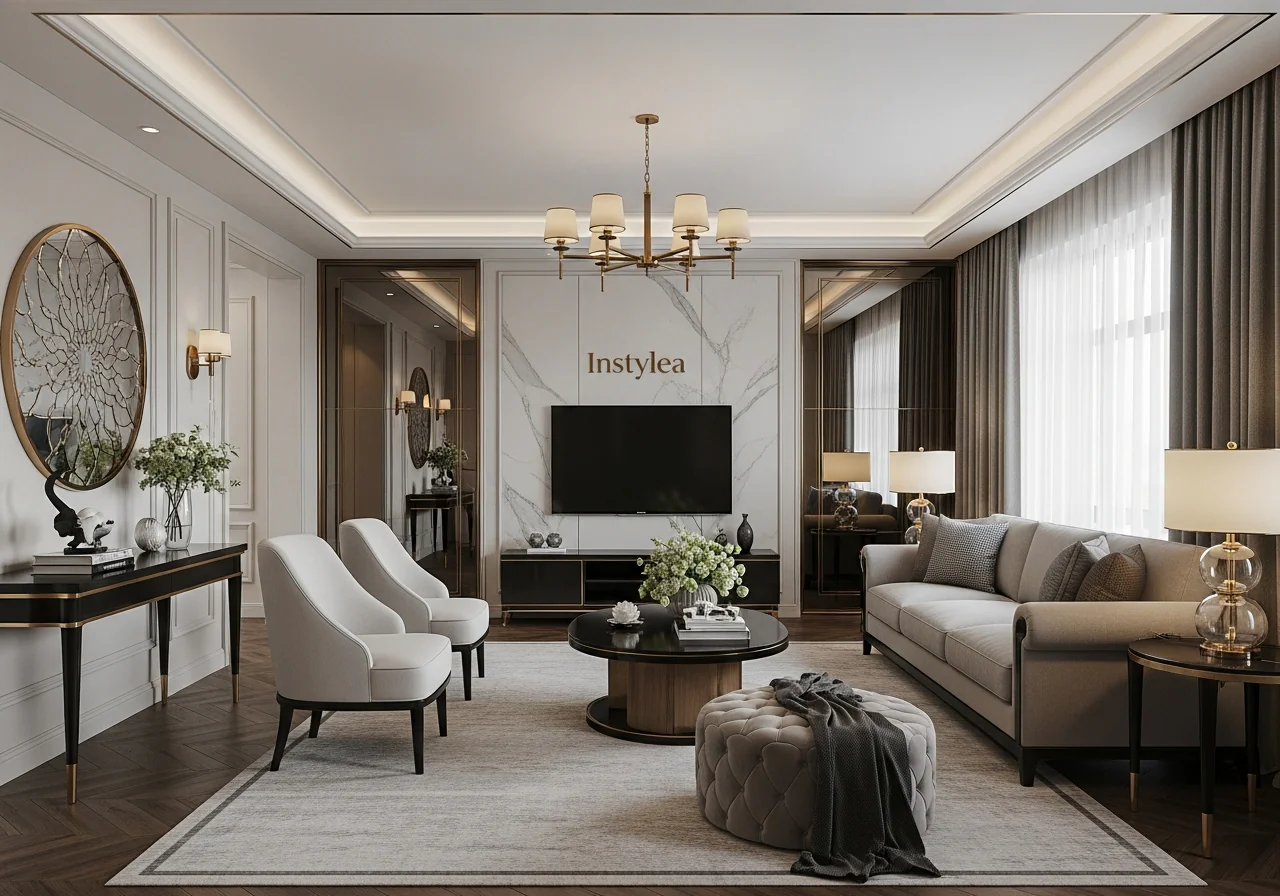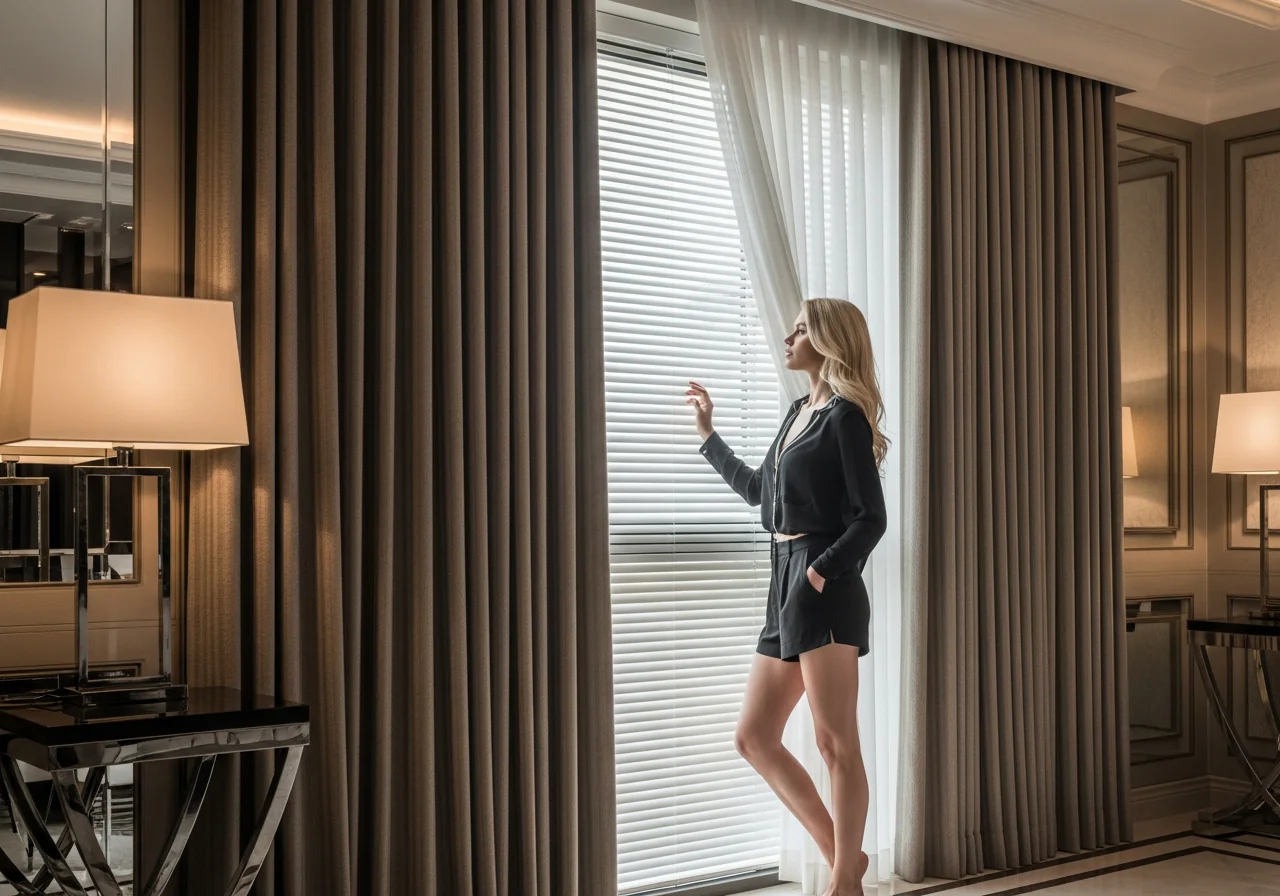Just before sunrise in Dubai, the city feels quiet and precise. Air is cool, birds try a few warm up notes, and a small apartment in Jumeirah Beach Residence wakes on cue. A gentle scene fades in, side lamps glow, linen sheers float as motorized curtains Dubai glide, and the coffee machine hums like a friend who knows the schedule. No one touched a switch. The home heard a routine and answered. A few years ago this would have felt like a showroom trick. Today it is daily life. The short version is simple. Technology is transforming interior design by shifting focus from objects to experiences. Rooms still need good sofas, kind rugs, and honest hardware. What changes is how they move, listen, and learn to care for your day.
This story follows real homes across the Emirates, a studio in Business Bay that doubles as an office, a villa in Mirdif where children nap in cool rooms at noon, and a family house in Sharjah that hosts unannounced guests without panic. We will stay local, AED for money, centimeters and meters for distance, and we will respect habits that shape homes here. Hospitality runs late. Light is strong. AC must be smart, not loud. The goal is not to fill rooms with gadgets. It is to make spaces feel kinder and easier through clear choices. In these pages you will find solid steps for smart home interiors UAE, routines as simple as a voice scene, and ideas for home automation on a budget that still feels refined. We will touch on voice controlled lighting, practical use of AI interior design tools, and steady routes to sustainable smart design that saves energy without asking you to live like a caretaker of machines.
- Why technology is transforming interior design in the UAE
- Smart Home Interiors UAE, the human plan behind the systems
- Voice Controlled Lighting, calm scenes for bright places
- Motorized Curtains Dubai, light and sleep on your side
- Home Automation on a Budget, smart without the strain
- Sustainable Smart Design, tech that saves without nagging
- AI Interior Design Tools, decisions with fewer regrets
- Stories from three homes where technology is transforming interior design
- Design grammar for smart homes, stylish spaces
- Material and finish choices that love sensors and light
- Furniture layouts that play well with motors and scenes
- How designers plan homes when technology is transforming interior design
- Home Automation on a Budget, mistakes to avoid
- Sustainable Smart Design and the AED conversation
- AI Interior Design Tools in your pocket, a small workflow
- Where Instylea fits into smart plans
- Anchor link to the heart of the plan
- Security, privacy, and a quiet mind
- From noon to night, a sample day in scenes
- Costs, AED ranges, and where to begin
- Language for guests and elders
- What to buy first when technology is transforming interior design
- Common questions answered quickly
Why technology is transforming interior design in the UAE
Homes here are bright and social. They carry heat and sand on their shoulders for a long season, then hand out winter evenings like gifts. In this rhythm, tech helps in small ways that add up. A sensor turns off AC when a balcony opens. A battery motor pulls down blackout during a nap. A voice scene shifts light from iftar prep to tea with cousins. These moves are not flashy. They are domestic kindness. That is why technology is transforming interior design faster in the Emirates than in many places. The work is practical, the return is immediate, and the feeling is calm.
Smart Home Interiors UAE, the human plan behind the systems
When people hear smart home interiors UAE, they picture hubs and cables. Designers picture routines. Start with the day, then make the plan. Morning wake. Midday glare. Cooking hour. Evening welcome. Sleep. For each, decide the light, the shade, the temperature, the sound, and the scent. If a routine needs a hand, let tech do it quietly. If a routine is easy by hand, keep it manual. The designer’s job is to hide effort, not show equipment.
Room by room priorities for smart home interiors UAE
- Living room. Scenes for morning, guests, and movie night. Sheers and blackout on separate tracks. AC linked to open windows so cool air is not wasted.
- Bedrooms. Quiet motors for blackout, motion lights under beds for soft night paths, and alarms that raise light before sound.
- Kitchen. Task lights under cabinets, extractor linked to hob status, and push to open drawers where hands are often busy.
- Entry. Presence sensor for a warm lamp at dusk, camera that respects privacy, and a tray with wireless chargers that hides the mess.
Voice Controlled Lighting, calm scenes for bright places
Voice controlled lighting turns a group of switches into a single sentence. After sunset in Abu Dhabi, a parent opens the door with hands full and says, evening on. Lamps glow, the hallway breathes, and the room looks ready without a scramble. Good scenes do not chase drama. They follow habits. If you sit with tea after Isha, set a scene that warms light to 2700 K and dims to 30 percent. If the kids study at the dining table, a task scene lifts pendants while side lamps fade. Voice is a remote for life, not a performance.
Setting three reliable scenes with voice
- Morning soft. Sheers open to 60 percent, downlights at 20 percent, kitchen task lights at 50 percent.
- Guests. Entry lamp bright, living lamps at 50 percent, accent on art at 20 percent, music low.
- Sleep. All off except night routes, blackout down, AC to 23 or 24 °C, phones on charge in a drawer.
Motorized Curtains Dubai, light and sleep on your side
In this climate, light control is health. Motorized curtains Dubai become the unsung heroes of rest and energy savings. Bedrooms sleep deeper with clean edges that block leaks. Living rooms hold glare in the hottest hours without feeling like caves. Modern systems come in wired and battery formats. Rentals often choose battery motors with long life and simple charging. Owners lean to wired when walls are open. Measure in centimeters, clear 15 to 25 cm of glass on each side for stacks, and let fabric kiss the floor since puddles collect dust here.
Practical AED ranges for motorized curtains Dubai
- Per window for a standard span, AED 900 to AED 2,200 including motor, track, and standard fabric. High spans and specialty fabrics add cost.
- Remote controls are often included. Voice control adds little if a hub already lives in the house.
- Battery options simplify retrofit. Charge cycles stretch months in typical use.
Home Automation on a Budget, smart without the strain
You do not need a giant system to feel the shift. Home automation on a budget means buying in the right order. Start with lighting and curtains. Add a smart thermostat that respects your schedule. Layer sensors where waste hurts. Only then consider larger systems. If you own, wire for the future. If you rent, keep it portable, lamps, battery motors, smart plugs, and a small hub that fits in a moving box.
Three budget ladders in AED
- Starter, AED 1,500 to AED 3,500. Two smart floor lamps, three smart bulbs, a small hub, and a pair of sensors for balcony doors.
- Comfort, AED 5,000 to AED 10,000. Add motorized blackout in one bedroom, under cabinet task lights, and a smart thermostat for the main zone.
- Calm home, AED 12,000 to AED 25,000. Curtains in two rooms, layered lighting scenes across living and dining, sensors for entry and AC, and a simple projector setup to hide screens.
Sustainable Smart Design, tech that saves without nagging
Sustainable smart design is not list keeping. It is small choices that lower bills and stress. The best energy savings in the UAE come from shade, AC discipline, and light that works only when someone is present. A motor that closes blackout before noon cuts solar gain. A thermostat that sleeps when you travel saves quietly. A presence sensor in the hallway stops night lights from glowing all day. These are easy wins. You feel them in the air and on the bill.
Low effort, high return moves
- Set AC to a steady band, 23 to 24 °C in living areas, 24 to 25 °C in bedrooms. Avoid yo yo changes that force compressors to sprint.
- Use thermal blackout behind sheers on west facing glass. It pays for itself in comfort.
- Add door and window sensors to pause cooling when fresh air is in play.
AI Interior Design Tools, decisions with fewer regrets
Design rarely fails on ideas. It fails on sequence and scale. AI interior design tools help you see options fast and measure consequences before buying. You can test a sofa depth on a phone. You can render a media wall with a fluted panel and check how cables hide. You can place a projector and see if the throw reaches your wall. These previews cut returns and keep AED where it helps. Use AI for sketches, not for taste. Let your room, your light, and your habits set the final call.
How residents use AI interior design tools in the UAE
- Plan curtain stacks in tight apartments so glass stays free.
- Compare rug sizes under sectional vs two chair layouts.
- Test pendant heights above a dining table at 75 to 85 cm before drilling.
Stories from three homes where technology is transforming interior design
Business Bay studio, one room, many hats
A copywriter lived in a 38 m² studio with a view of the creek and a problem called gear. Work kit crept across the table and woke at 6 am when lights blasted the ceiling. We drew a five line plan. Battery motor for blackout. Two lamps on smart plugs. Under cabinet lights for a shelf desk. A hub for voice scenes. A tray for chargers in a drawer. Budget sat at AED 3,800. Mornings warmed in with soft light, nights cooled with a sentence, studio calm. The client said the room felt bigger. It was not bigger. It just stopped shouting.
Mirdif villa, naps and homework
Four children under twelve, a steady flow of cousins, and a lovely chaos at noon. Heat and glare bullied bedrooms, naps failed, and tempers followed. We added thermal blackout with motors in two kids’ rooms, tied to a noon scene. We moved AC to a schedule. We set hallway lights to motion for night paths. Budget sat near AED 12,000 for the critical rooms. Within a week, naps held and mornings were calmer. Parents called it peace by centimeters, fabric to frame, sensor to sensor.
Sharjah family house, relatives at the door
A ground floor majlis needed to be ready in five minutes. We wrote a small script. Presence at entry lifts a lamp, AC starts a comfort band, sheers settle, and a gentle oud diffuser ticks on. A single sentence sets tea and music. The room never looked theatrical, it looked steady. Visitors felt seen. That is the point of tech in a room made for welcome.
Design grammar for smart homes, stylish spaces
Tech is a language. If it speaks too loudly, it becomes a lecture. Keep grammar simple. Lamps with fabric shades instead of cold spots. Sensors where they solve a real problem. Screens that hide so conversations lead. Cables with a planned route and a 5 to 7 cm void in media units so heat and air move. Draw this grammar once and enjoy it for years.
Material and finish choices that love sensors and light
In strong Gulf light, matte finishes read rich. Limewash down a hallway, a honed stone splashback, micro fluting that hides doors and hushes echoes. These pair well with warm scenes and never glare into lenses or eyes. Performance fabrics forgive tea and children. Porcelain floors keep cool when AC rests. Oak and ash in light stains love warm light. Brass ages into a friendly glow. These are design choices that do not fight your tech. They work with it.
Furniture layouts that play well with motors and scenes
Place seating to respect glass. Leave 15 to 25 cm clear for curtain stacks so motors do not meet chair arms. Set coffee tables 35 to 45 cm from sofas for easy reach. Keep 90 cm for main walkways and 60 cm for secondary routes so motion sensors do not trip on shadows. A sofa with raised legs lets light wash under and makes rooms feel cooler. A console with a cable spine keeps hubs and routers out of sight, still able to breathe.
How designers plan homes when technology is transforming interior design
Sequence wins. Start with routines. Sketch light by time of day. Decide shade and AC rules. Choose lamps and tracks. Then shop for furniture and art. Small projects race to buy sofas first and end up pushing them around to chase light. Flip the order. Let light and air write the chapter, then add seats and tables to finish the story. This mindset is the quiet core of how technology is transforming interior design in daily practice.
Home Automation on a Budget, mistakes to avoid
- Buying devices without a plan. Scenes matter more than brands. Write scenes first.
- Cold color temperatures at night. Move to 2700 K for living and bedrooms. Keep 3000 K in kitchens if you must.
- Cables without voids. Media units need 5 to 7 cm behind panels, plus ventilation. Heat kills gear, not time.
- Ignoring manual backups. Switches should work if voice fails. Curtains must move by hand if needed.
Sustainable Smart Design and the AED conversation
AED should go where life touches the house every day. Spend on motors for rooms that sleep and work hard. Spend on dimming and lamps before expensive ceiling grids. Spend on thermal fabrics before new AC. Save on glossy surfaces that smudge. Save on novelty gimmicks that want attention. Sustainable smart design is not only power bills. It is also your attention budget. Choose systems that ask for little and give a lot.
AI Interior Design Tools in your pocket, a small workflow
You do not need a full 3D suite. A phone app and a tape measure will do. Photograph your living room. Draw a rectangle around the window. Drop a virtual track and test curtain stacks. Place a sofa in two sizes and see walkway widths. Try three rug sizes. Save the set that gives 90 cm paths and clean glass. Share the view with family. Decide once, buy once. That is the calm you are after, and it is part of how AI interior design tools keep projects light.
Where Instylea fits into smart plans
Some readers prefer a partner who has measured a thousand apartments and knows how summer treats fabric. If you want eyes that live here, reach out to a UAE team that can visit, check window heights, and test a motor on the spot. Instylea often handles the mix, curtains, tracks, motors, lighting, and simple joinery, then returns for aftercare when July arrives. You can also browse the Instylea projects tracker to see real timelines across the Emirates. The point is not to buy more gear. The point is a home that feels like it is helping.
Anchor link to the heart of the plan
Need the fast path again. Jump back to the why section to remember how technology is transforming interior design for daily life, or scroll to this anchor when you want to reset your scenes and start fresh.
Security, privacy, and a quiet mind
Smart cameras and sensors are useful when travel is common. Choose indoor cameras that sleep when someone is home, or keep them at the entry only. Turn off indicator lights where they bother sleep. Store clips locally when you can. Give guests a manual switch that kills voice in the majlis if privacy matters. A calm home respects people first, devices second.
From noon to night, a sample day in scenes
- 6:30 Sheers lift to 60 percent. Kitchen task lights wake. Coffee runs.
- 12:00 Blackout drops in bedrooms, AC holds a steady band, work light moves to desk strips.
- 17:30 Entry lamp glows. Living lights set to 40 percent. Music fades in.
- 21:30 Movie scene, projector on, lamps to 20 percent, blackout close.
- 23:00 Sleep scene, chargers on, night routes at 10 percent, alarms set to light first.
Costs, AED ranges, and where to begin
Projects scale easily. A small apartment can feel new for AED 2,000 when you place two smart lamps, a hub, and a better rug to anchor light. A family home shifts for AED 10,000 when you motorize two key windows and group lights by scene. A full villa rebuild spreads from AED 50,000 upward when you wire for hidden screens, shade on sensors, and zone AC by routine. Spend by use, not by square meter. Rooms that earn their keep get the gear first.
Language for guests and elders
A smart home should be hospitable. Label two switches in clear type. Keep a manual pull for curtains that works even if power rests. Add a table lamp with a knob for guests who dislike voice. Place a printout near the entry with three lines, evening on, movie on, sleep. Tech should make hosting easier, not require a tutorial every visit.
What to buy first when technology is transforming interior design
- Write three daily scenes and one host scene.
- Fix lighting with two floor lamps, one table lamp, and warm bulbs.
- Set curtain stacks and choose motors for the rooms that need them.
- Add a smart thermostat and two door sensors.
- Hide cables with a console that has ventilation and a cable spine.
Common questions answered quickly
- Can a renter try all this. Yes, start with lamps, battery motors, and a small hub. Take it with you when you move.
- Does voice need good internet. A steady connection helps. Many devices still allow local control even if the network stumbles.
- Will smart gear look cold. Not if you choose fabric shades, warm bulbs, and cover screens when not in use.
This guide shows how technology is transforming interior design through routines and small devices that serve daily life. It maps smart home interiors UAE by room, builds calm with voice controlled lighting, picks motorized curtains Dubai for rest and glare, offers clear ladders for home automation on a budget, and frames choices inside sustainable smart design. It also shares ways to sketch decisions with AI interior design tools so you buy once and live easier.
Homes in the Emirates sit between sea and sand, sun and night, family and friends. The best rooms keep these meetings graceful. When technology is transforming interior design, it is not about gadgets on display. It is about scenes that feel like manners, light that treats eyes well after a bright day, fabric that moves when rest is needed, and air that behaves without fuss. You can start with a pair of lamps and a habit, then add motors where sleep matters, then add sensors where waste hurts. You can ask a local partner like Instylea to measure windows, test motors, and set scenes, or you can follow the steps here and build at your own pace. Either way, smart homes and stylish spaces are not two separate goals. They are one calm project, done in small, honest moves, that lets your house help you live the day you already want.
Frequently Asked Questions (FAQs)
Explore the finest interiors in the UAE market. Step inside stunning spaces. browse now!


